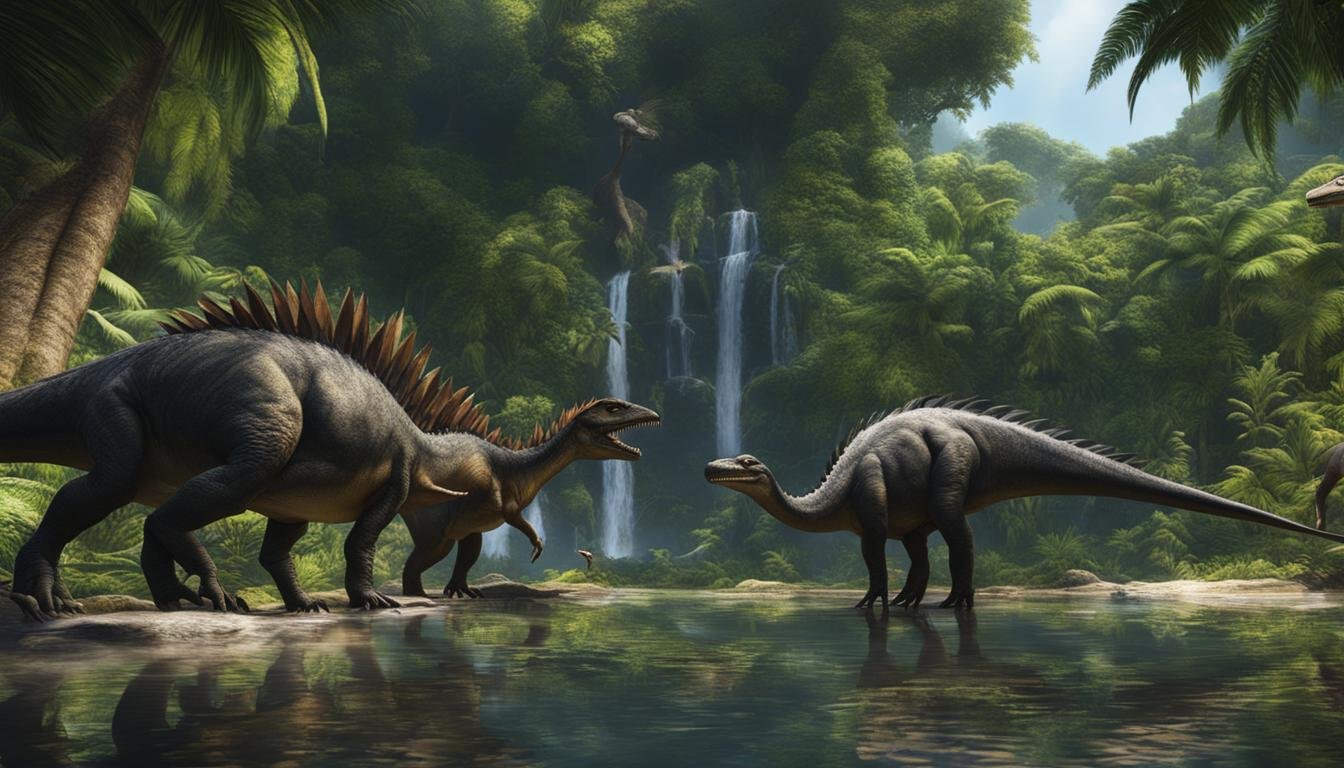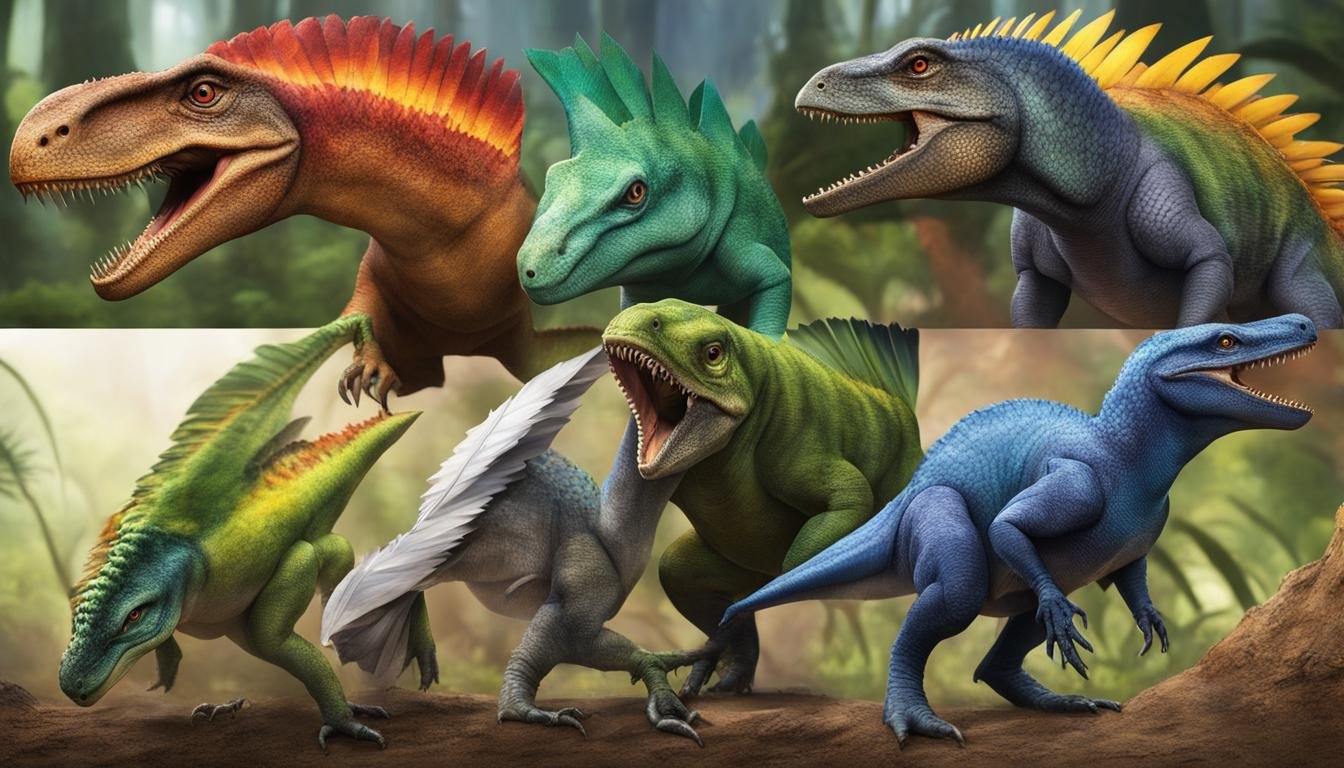Birds are fascinating creatures that have evolved over millions of years. But did you know that birds are actually descendants of dinosaurs? It’s true! In this article, we will explore the incredible story of the survival of avian dinosaurs and the evolution of birds.
66 million years ago, a catastrophic event known as the Cretaceous-Paleogene extinction wiped out most life on Earth, including the dinosaurs. However, birds were one of the few dinosaur groups that managed to survive. They emerged as the sole survivors and went on to evolve into the diverse bird species we see today.
One of the key species in the transition from dinosaurs to birds is Archaeopteryx. This remarkable creature had both reptilian and avian features, with the ability to fly and feathers covering its body. It serves as a crucial link in understanding the evolution of birds.
| Main Point | Description |
|---|---|
| Avian Dinosaurs’ Survival Post-Extinction | The survival of avian dinosaurs after the Cretaceous-Paleogene extinction event highlights their incredible adaptability. |
| Significance of Archaeopteryx | Archaeopteryx serves as a pivotal transitional species, shedding light on the evolutionary journey from dinosaurs to birds. |
| Role of Feathered Dinosaurs | Feathered dinosaurs were crucial in the evolutionary process that led to the development of modern birds. |
| Evolutionary Adaptations in Birds | The development of beaks and the loss of teeth in birds were key adaptations allowing them to occupy diverse ecological niches. |
| Birds as Dinosaur Descendants | Birds represent the sole surviving lineage of dinosaurs and have successfully adapted to a wide range of environments in the modern world. |
Evolutionary Changes and Adaptations
The survival and evolution of birds after the extinction event involved various evolutionary changes and adaptations. Birds underwent adaptive radiation, diversifying into different ecological niches and evolving various characteristics such as flight, beak development, and skeletal adaptations. The Mesozoic Era, during which avian dinosaurs evolved, saw significant biodiversity shifts and the emergence of new species.
The theropod ancestors of birds played a crucial role in the development of avian features, including beak formation and plumage evolution. As dinosaurs transformed into birds, their skeletal structure adapted to accommodate flight. Wings evolved from forelimbs, and the development of feathers provided essential adaptations for flight.
One of the key evolutionary changes in birds was the development of a beak, replacing the teeth found in their dinosaur ancestors. This beak development allowed birds to specialize in feeding on a wide range of food sources, from nectar to insects and seeds. Additionally, birds developed skeletal adaptations such as a lightweight skeleton to enhance their flight capabilities, including the fusion of bones and the reduction of unnecessary structures.
“Birds are a remarkable example of evolutionary adaptation. The development of flight, beaks, and other characteristics allowed them to survive and thrive in diverse environments.”
Another significant adaptation in birds is the evolution of plumage. Feathers, originally evolved for insulation and display purposes, became crucial for flight. They provide not only lift and propulsion but also protection and camouflage. Plumage has played a role in courtship displays and species recognition, contributing to the vast diversity and beauty of birds.
| Evolutionary Changes and Adaptations | Examples |
|---|---|
| Flight Evolution | Development of wings, lightweight skeleton |
| Beak Development | Specialization for different diets |
| Skeletal Adaptations | Lightweight skeleton, fusion of bones |
| Plumage Evolution | Feathers for flight, insulation, and display |
Survival Strategies and Speciation Events
In order to survive and thrive after the extinction event, birds developed various survival strategies and underwent speciation events. Natural selection played a crucial role in shaping avian morphology and determining the traits that allowed certain bird species to adapt and flourish.
One of the key survival strategies was habitat adaptation. Birds diversified and occupied different ecological niches, with each species evolving specific characteristics that suited their environments. Some birds adapted to live in forests, while others thrived in grasslands or wetlands. This adaptability allowed birds to find suitable habitats and access different food sources, enhancing their chances of survival.
Flight mechanisms also played a significant role in the survival of avian dinosaurs and the transition to birds. The ability to fly gave birds a distinct advantage, allowing them to escape predators, find food, and explore new territories. Over time, flight adaptations evolved to suit different bird species’ needs, resulting in a wide variety of wing shapes, sizes, and flight styles.
Speciation events were another crucial aspect of bird evolution. As birds diversified and adapted to different environments, isolated populations developed unique genetic traits and characteristics. Over time, these populations became distinct species through the process of speciation. Paleobiogeography, the study of species’ distributions in the past, helps researchers understand the geographic patterns of speciation events and their influence on bird evolution.
Influence of Fossil Record and Paleontological Studies
The fossil record and paleontological studies play a crucial role in unraveling the mysteries surrounding the survival of avian dinosaurs and the evolution of birds. These scientific endeavors provide valuable insights into the prehistoric world, shedding light on the connections between dinosaurs and birds and helping us understand their evolutionary progression.
Fossil discoveries, such as the famous Archaeopteryx, offer tangible evidence of the transition from dinosaurs to birds. They provide snapshots of ancient life, showcasing the physical characteristics and anatomical features that link these two groups. By meticulously studying and analyzing these fossils, paleontologists can reconstruct the appearance, behavior, and ecological roles of these extinct creatures.
“The fossil record allows us to peek into the past and witness the awe-inspiring journey of avian dinosaurs transforming into the diverse array of bird species we see today.”
Paleontological studies go beyond individual fossil discoveries and focus on broader patterns and trends. Researchers study the distribution of fossilized remains over time and across different geographic regions, a field known as paleobiogeography. By mapping the distribution of species in the past, scientists gain insights into how birds adapted and migrated throughout history, revealing their remarkable ability to survive and thrive in various environments.
| Fossil | Significance |
|---|---|
| Archaeopteryx | Provides evidence of the dinosaur-bird transition with its mix of reptilian and avian features, including feathers and skeletal characteristics. |
| Sinornithosaurus | Offers insights into the evolution of feathers and the development of flight-related adaptations. |
| Hesperornis | Reveals the presence of flightless birds in the fossil record, demonstrating the diverse strategies birds employed during their evolutionary history. |
| Ichthyornis | Highlights the origins of the beak and tooth loss in birds, showing the gradual transition from toothed ancestors to modern toothless species. |
As our understanding of avian dinosaurs and bird evolution continues to evolve, ongoing paleontological studies and ornithology studies contribute to our knowledge base. These studies help fill in gaps, refine existing theories, and uncover new insights. By combining fossil evidence, genetic analysis, and ecological observations, scientists are piecing together a comprehensive picture of how birds emerged and thrived amidst the changing landscapes and environmental challenges of Earth’s history.
By delving into the fossil record and unearthing ancient remains, paleontologists bridge the gap between prehistoric creatures and the vibrant bird species we see today. The preservation of these long-extinct beings allows us to marvel at their extraordinary adaptations and resilience throughout millions of years. The influence of fossil record analysis and paleontological studies cannot be overstated in unraveling the captivating story of avian dinosaurs and the evolution of birds.
Conclusion
The survival of avian dinosaurs and the evolution of birds are incredible tales of adaptation and resilience. Despite the mass extinction event that wiped out many forms of life, birds, as descendants of dinosaurs, managed to survive and thrive. Through various evolutionary changes, including the development of beaks and the loss of teeth, birds were able to adapt to different ecological niches and survive on a varied diet.
The fossil record and paleontological studies continue to shed light on the complex evolutionary history of birds, providing valuable insights into the prehistoric creatures that paved the way for modern bird species. These studies have uncovered fascinating connections between dinosaurs and birds, offering physical evidence of their evolutionary progression. With each new discovery, our understanding of bird evolution deepens, revealing the remarkable morphological changes, ecological adaptations, and speciation events that occurred over millions of years.
From the ancient world of avian dinosaurs to the present-day diversity of modern bird species, the story of bird evolution is a testament to the power of adaptation and survival. By exploring the intricate details of their past, we gain a greater appreciation for the natural world and the remarkable creatures that have shaped it.






